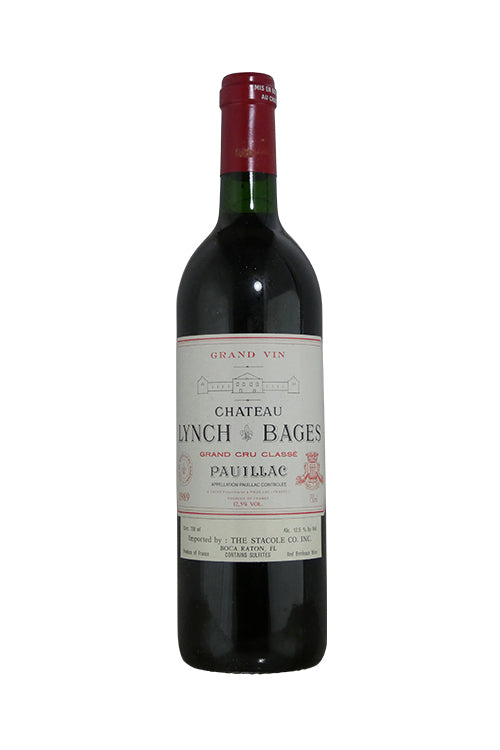1
/
of
1
Chateau Lynch Bages - 1989 (750ml)
Chateau Lynch Bages - 1989 (750ml)
5.0
Rated 5.0 out of 5 stars
1
Regular price
$439.99
Sale price
$439.99
Regular price
$524.99
Unit price
/
per
Share :

- varietal
- Region
- Sub - Region
- Type
- Reviews
Includes red wines where there is either no predominant variety or the blend is proprietary.
Located in South West France, Bordeaux is one of the World’s most important wine producing regions. The Gironde estuary and its two tributaries, the Garonne and Dordogne, splits the region into the ‘left bank’ and ‘right bank’. The left bank, on the west side of the Gironde, consists of the Médoc and Graves, while Pomerol and St. Emilion are located on the right bank. In between the Garonne and Dordogne is the Entre-Deaux-Mers region, French for 'between two seas'. From north to south the Médoc includes the famous classed growth chateaux in the communes of St. Estephe, Paulliac, St.Julien, and Margaux. The Graves and it’s enclave Pessac-Léognan make both red and white wine. While those of Pessac- Léognan’s are dry, Sauternes and Barsac make world-famous sweet whites. Although Bordeaux makes some of the world’s most expsenive wines, less expensive but good value alternatives come from Moulis and Listrac on the left and Bourg and Blaye on the right offer less expensive wines for earlier consumption.
Pauillac is an important commune of the Medoc on the left bank of Bordeaux's Gironde estuary. Sandwiched between St. Estephe to the north and St. Julien so the south, the village boasts three of the Medoc’s five first growths ranked in the official Classification of 1855. They include Chateau Lafite, Latour, and Mouton. It is also home to no less than 12 fifth growths, whose fierce competition has led to a increase in the standard of their wine. Consequently, at a fraction of the price, they are often considered are great deal when compared to first growths and even “super seconds”.
Red wine is wine made from dark-coloured grape varieties. The color of red differs based on the grapes variety or varieties used.Interestingly, black grapes yield a juice that is greenish-white. The actual red color comes from anthocyan pigments (also called anthocyanins) from the skin of the grape (exceptions are the relatively uncommon teinturier varieties, which produce a red colored juice). Most of the production centers around the extraction of color and flavor from the grape skin.
5.0
Rated 5.0 out of 5 stars
Based on 1 review
5
Rated out of 5 stars
1
Total 5 star reviews: 1 4
Rated out of 5 stars
0
Total 4 star reviews: 0 3
Rated out of 5 stars
0
Total 3 star reviews: 0 2
Rated out of 5 stars
0
Total 2 star reviews: 0 1
Rated out of 5 stars
0
Total 1 star reviews: 0 100%would recommend this product
1 review
- JSJohn S.Verified BuyerI recommend this productRated 5 out of 5 stars2 years agoGreat wine
Still young after 32 years.
Was this helpful?
